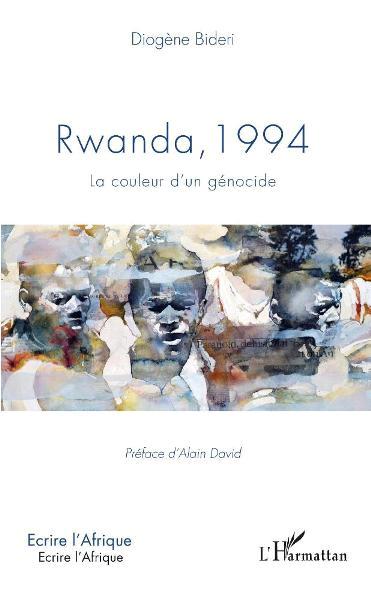
Kigali: Bideri Diogène, the principal legal adviser at the National Commission for the Fight against genocide (CNLG) has written the book entitled “Rwanda 1994, la couleur d’un génocide”, which compiles testimonies on massacres of the Tutsi until the 1994 genocide.
The book was published by the Paris based ‘Edition Harmattan’ in May 2019.
In this book, Diogène Bideri traces the family narrative through the testimonies of family members who survived the genocide perpetrated against the Tutsi in 1994 in Rwanda. The sum of the individual tragedies that of the author, those of the other victims, is the colour of the genocide: a visit within the crime of crimes.
Bideri said that writing about the history of the genocide against the Tutsi is a powerful tool to preserve it and to showcase the evilness of the massacres committed against the Tutsi, so it can serve as a lesson to the youth and others to ensure that what happened never happens again.
Bideri had the chance to leave Rwanda in 1993, shortly after, the genocide against the Tutsi was perpetrated and claimed six members of his family including four siblings and both parents.
Even though he was not in Rwanda, he recounts how they were rudely massacred, and gives the speech to members of his family who survived.
The title, La Couleur d’un génocide, which is translated in English as the colour of genocide does not mean the ordinary colour like red, black or white, it instead means he evilness of the genocide against the Tutsi.
“What I wanted to mean is that the genocide itself is something strange. The colour in Kinyarwanda means Ibara, which also means a big calamity, it’s something that claims lives of the people who have not been sick, and it is never forgotten in the history of humanity”, he said.
He says that “I know the death of my parents and siblings, I know everything because there are even some perpetrators of these killings who told me everything”.
“My parents were massacred in Gisenyi, in the city centre. They burnt them with grenade”, he recounts.
Bideri also talks about his sister who was by then dwelling in Kiyovu in Kigali who was shot by soldiers. Luckily the bullet passed above the heart. The killers threw her in the dump hole thinking that she was dead. She later on realised that dogs were eating thee dead bodies and fled to the International Committee of the Red Cross (CICR), from where she survived.
Bideri, born in the former commune of Mukingo, currently Busogo Sector in Musanze District, as the first born of the family, his father told him how the Tutsi were persecuted from 1959.
He told him how he was detained in Ruhengeri Prison in 1963, showed him some areas where Tutsi were killed and told him how they were persecuted in Bugesera and other areas where there were serial massacres of the Tutsi between 1962 and 1973.
In 1973, already grown up, witnessed the burnings of homes of the Tutsi, they fled to the missionary of Ruhengeri. He reflects on why the genocide targeted the Tutsi, and illustrates that they were persecuted for years due to the bad politics of discrimination, divisions and hatred.
The history in this book illustrates that persecutions of the Tutsi were done for years with the support of the then regimes, which was ignited by inflammatory media like RTLM Radio and the journal Kangura, which acted as propagandists of the discriminatory politics.
Bideri explains that writing about the history of his family is the best way to talk about the values he knows to them and the legacy they gave to him so that his descendants may read it. He talks as well about other Tutsi who were victims of the genocide.
Apart from the history of the killing of his family and other Tutsi, Bideri talks also about how thousands of Hutu surged into exile fleeing “Inyenzi”. Witnesses told him that those fleeing didn’t know what they were escaping.
In post genocide period, Dr Bideri explains that some of its survivors, some have regained life whereas others are confronted to serious consequences of trauma. Two of members of his family passed away one in 2001, the other in 2010.
Bideri explained that this book will be a tool for the youth who do not know the genocide against the Tutsi, the lessons they will draw-in will help them to ensure that genocide will never happen again.
The particularity of this book is that it gives an overview on the culture that characterized Rwandans, the history of the pre-colonial Rwanda, how Rwandans were living together and what they liked.
Speaking at the launch held at Kacyiru Public library, Jean-Damascene Bizimana, Executive Secretary of the National Commission for the Fight against Genocide (CNLG), said that writing the history of the genocide against the Tutsi is the best way to deny those who deny and trivialize it. (Fin)
